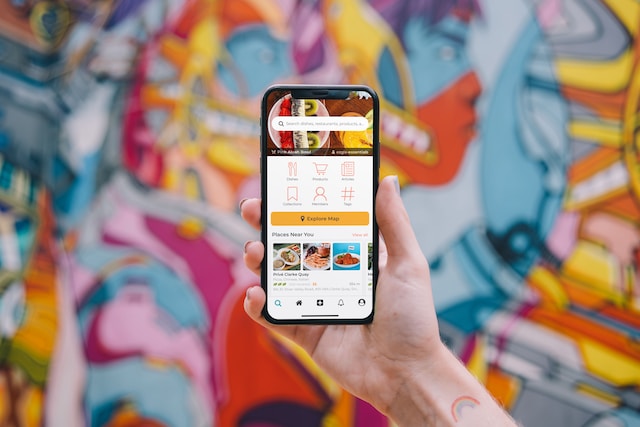In today’s digital age, where smartphones have become an essential part of our lives, mobile apps have gained tremendous momentum. A significant aspect of this development is the integration of mobile payment solutions and digital wallets within apps, which has transformed the way we make transactions. This article explores the impact of mobile wallets and payment integration on the mobile app development landscape, highlighting their benefits, challenges, and future prospects.
Understanding Mobile Wallets and Payment Integration
Mobile wallets are digital platforms that safely store financial data, including credit card information, enabling users to effortlessly make transactions from their mobile devices. Payment integration, on the other hand, involves incorporating payment gateways and APIs into mobile apps to enable seamless and secure transactions. Together, these technologies provide a user-friendly and efficient way to conduct financial transactions within mobile applications.
The Benefits of Mobile Wallets and Payment Integration
Enhanced User Experience:
Mobile wallets simplify the payment process and enhance user experience, eliminating the need to manually enter payment details for every transaction. This convenience improves user satisfaction and encourages repeat app usage.
Increased Conversion Rates:
Seamless payment experiences lead to increased conversion rates. By reducing friction during the checkout process, mobile wallets improve the chances of completing transactions successfully, ultimately boosting customer retention.
Streamlined Checkout Process:
Mobile wallets offer a streamlined checkout process, eliminating the need for users to manually enter their payment information for every transaction. This makes the payment process more efficient and smooth by reducing friction and speeding it up.
Personalization and Loyalty Programs:
Mobile wallets can integrate loyalty programs and personalized offers within the app. This allows businesses to reward their customers with special discounts, promotions, or exclusive deals, fostering customer loyalty and increasing engagement.
Enhanced Analytics and Insights:
By integrating mobile payment solutions, app developers gain access to valuable data and insights. They are able to make data-driven decisions to optimize their app and marketing campaigns by analyzing transaction patterns, consumer behavior, and purchase trends.
Offline Payments:
Some mobile wallets offer the ability to make offline payments, allowing users to complete transactions even in areas with limited or no internet connectivity. This feature is particularly useful in scenarios like traveling or when there is limited network connectivity.
Seamless Cross-Platform Experiences:
Mobile wallets and payment integration enable users to have a consistent payment experience across different devices and platforms. Whether they are using a smartphone, tablet, or desktop, users can access their payment information and make transactions seamlessly.
Reduced Cart Abandonment:
Simplifying the checkout process through mobile wallets can help reduce cart abandonment rates. Users are more likely to complete a purchase when the payment process is quick, convenient, and secure, leading to increased conversion rates and higher revenue for businesses.
Global Reach and Currency Support:
Mobile wallets can support many currencies, making it easier for businesses to cater to a global customer base. This expands market reach and allows businesses to serve customers from different regions without the need for complex currency conversions.
Integration with Third-Party Services:
Mobile wallets can integrate with various third-party services, such as ticketing platforms, ride-sharing apps, or food delivery services. This integration enables users to make seamless payments for a wide range of services within a single app, enhancing convenience and user satisfaction.
Security and Trust:
Last but not least, least, mobile wallets focus on security and trust. They use advanced encryption techniques, ensuring secure transactions and protecting user data. Features like tokenization and biometric authentication provide additional layers of security, instilling confidence in users.
Expanded Market Reach:
Lastly, integrating mobile payment solutions expands the market reach of mobile apps. With an increasing number of users preferring to make purchases through their smartphones, integrating mobile wallets enables developers to tap into this growing user base and enhance revenue opportunities.
Part 3: Challenges in Implementing Mobile Wallets and Payment Integrations
While mobile wallets and payment integration offer many advantages, their implementation comes with certain challenges that developers must address:
- Security Concerns: Protecting user data and ensuring the security of payment transactions is paramount. Developers must adhere to strict security standards and update their apps to address vulnerabilities.
- Compatibility and Integration: Compatibility and integration can be complex. Integrating various payment gateways and mobile wallet platforms may require different requirements and APIs. Developers need to ensure seamless integration across different platforms, providing a consistent experience to users.
- Compliance Issues with respect to Geographical Regions: Thirdly, navigating the regulatory landscape is essential. Different countries and regions have specific regulations and compliance requirements regarding mobile payments. Developers must understand these regulations to avoid legal issues.
Future Trends and Opportunities
The future of mobile app development lies in further advancements in mobile wallets and payment integration. Here are a few emerging trends:
Contactless Payments:
Firstly, contactless payments are gaining popularity and becoming more prevalent with the increasing adoption of Near Field Communication (NFC) technology. Mobile wallets enable users to make payments with a simple tap, enhancing convenience and speed.
Biometric Authentication:
Biometric authentication is becoming a standard feature in mobile wallets. Fingerprint scanning and facial recognition provide secure and user-friendly ways to authenticate transactions, reducing the reliance on traditional passwords.
Blockchain and Cryptocurrency:
The integration of blockchain technology and cryptocurrencies into mobile wallets could revolutionize financial transactions. Blockchain offers decentralized and secure alternatives to traditional payment methods, providing enhanced transparency and privacy.
Final Words
Mobile wallets and payment integration have revolutionized mobile app development, providing a convenient, secure, and efficient payment solution for users. By incorporating these technologies, developers can enhance user experiences, increase conversion rates, and tap into new markets. However, it’s important to address security concerns and stay updated with emerging trends in this ever-evolving field. As the app development landscape continues to evolve, mobile wallets and payment integration will play a crucial role in shaping the future of digital transactions.







